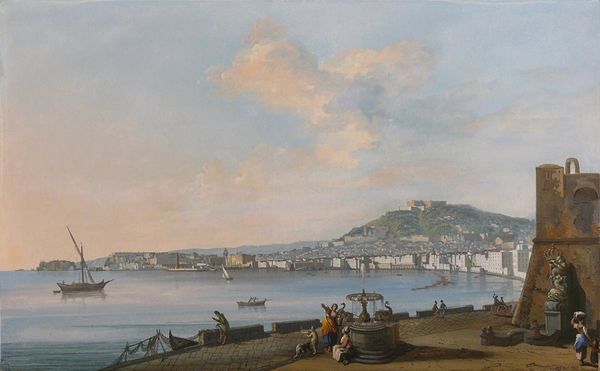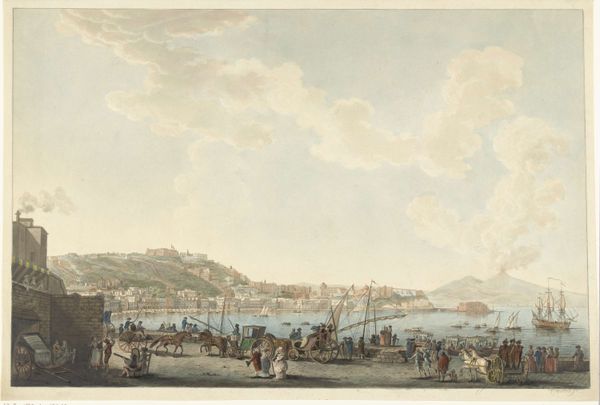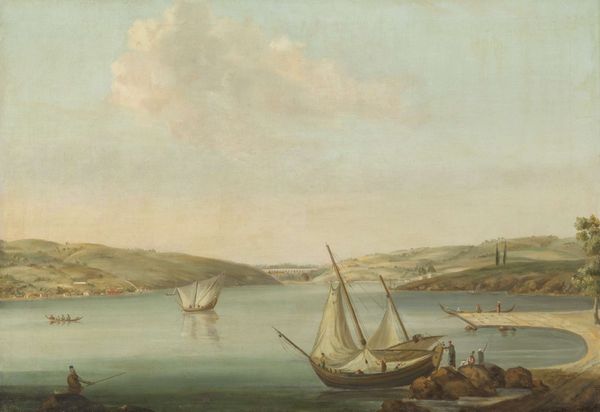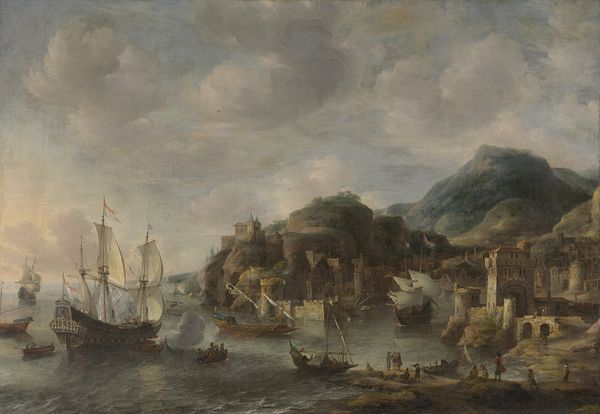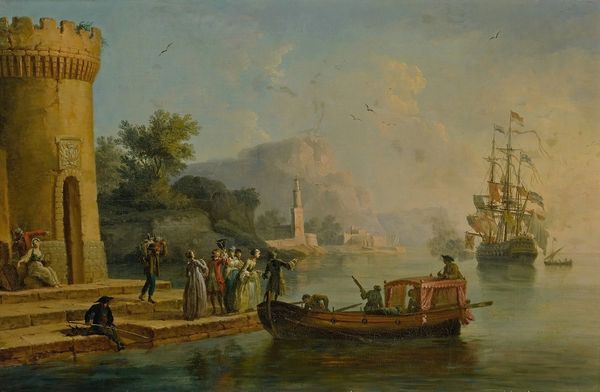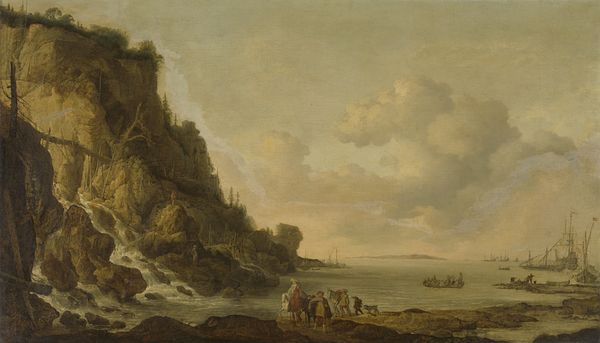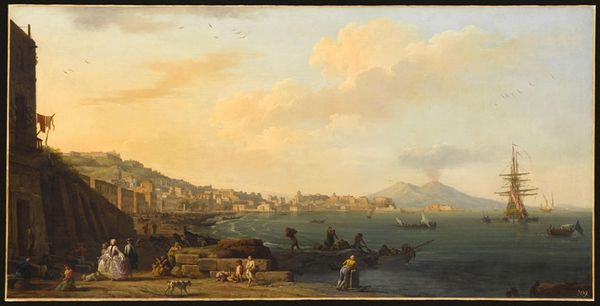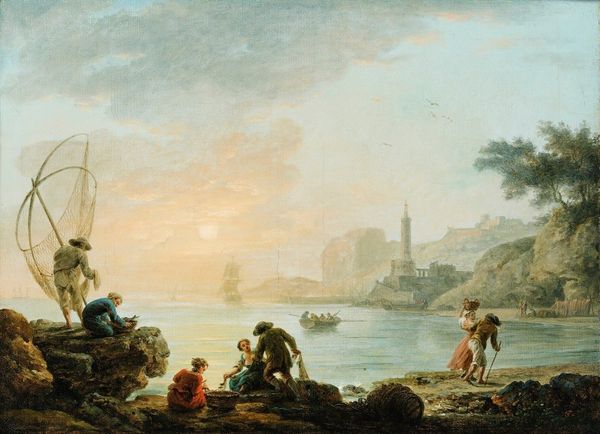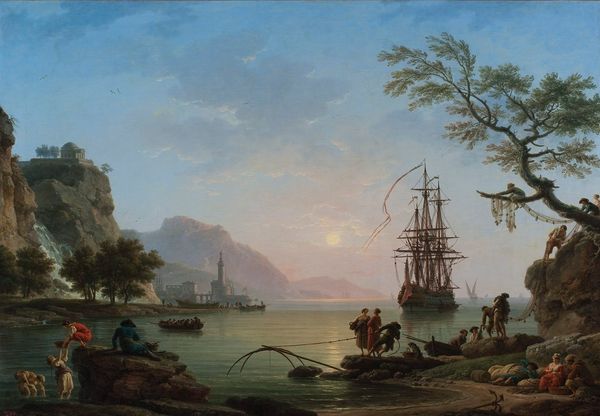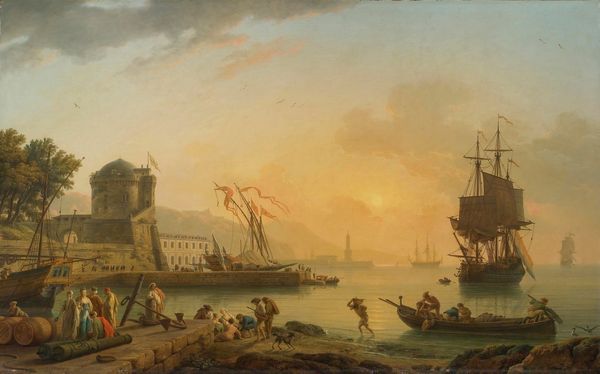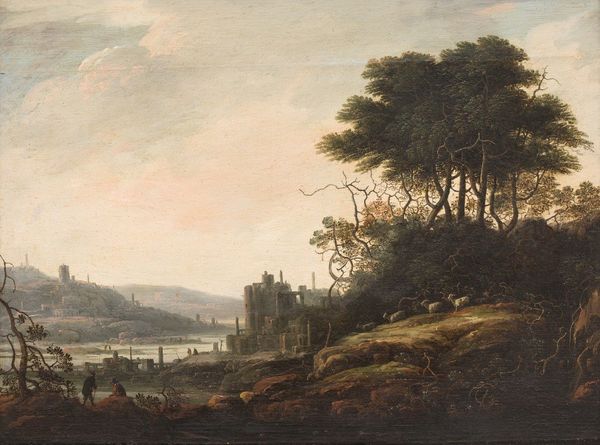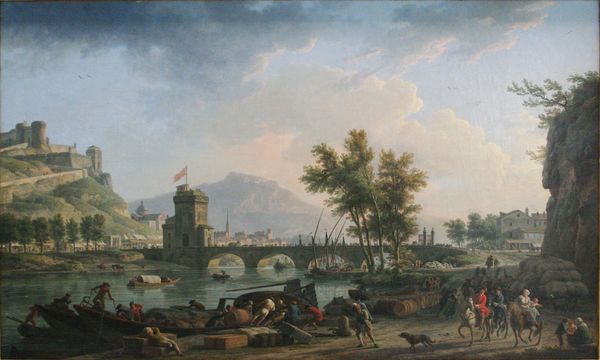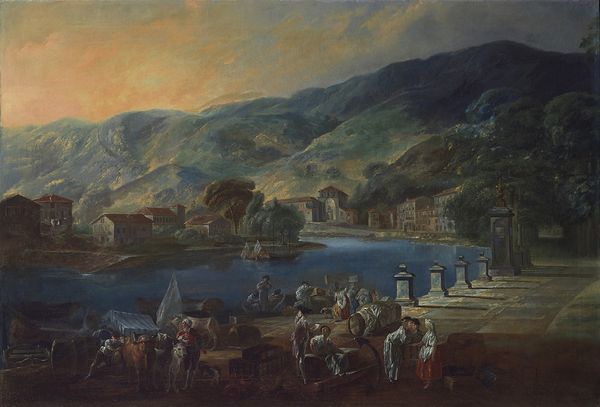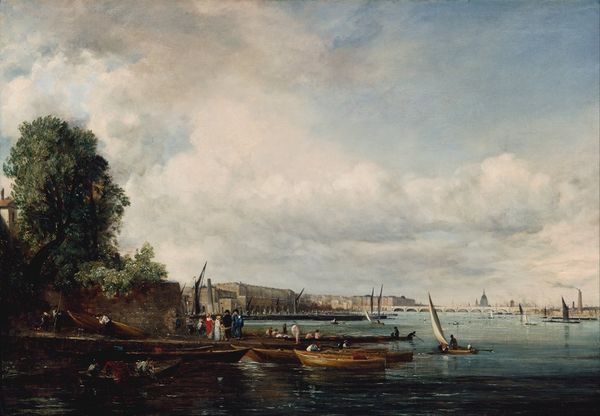
Dimensions: display: 352 x 457 mm frame: 500 x 605 x 63 mm
Copyright: CC-BY-NC-ND 4.0 DEED, Photo: Tate
Curator: Julius Caesar Ibbetson's "Briton Ferry, Glamorgan" offers a glimpse into rural Wales, the landscape meticulously rendered. Editor: It's incredibly peaceful, almost idyllic. The light is soft, and the composition is so balanced. Curator: Absolutely. Ibbetson painted this coastal scene to appeal to the picturesque aesthetic, but it also reveals the labor of transporting goods and livestock. Who is benefiting from this exchange of materials? Editor: Note the rough texture of the rocks compared to the smoothness of the water, the physical process of rendering these differing materials adds depth to his observation of the social landscape. Curator: That interplay is crucial, isn't it? The painting, while seemingly benign, is loaded with socio-economic dynamics. How might the figures on horseback relate to those on foot? Editor: A wonderful point. It invites us to consider the relationships between people and place. Curator: Yes, and to understand the historical context of land ownership. Editor: I appreciate that it prompts us to consider the social relations involved in transporting materials, the hands that shaped this landscape. Curator: Precisely, a subtle yet powerful work.
Comments
tate 8 months ago
⋮
http://www.tate.org.uk/art/artworks/ibbetson-briton-ferry-glamorgan-t01889
Join the conversation
Join millions of artists and users on Artera today and experience the ultimate creative platform.
tate 8 months ago
⋮
The view shows the area of Briton Ferry at the mouth of the River Neath in South Wales. Ibbetson visited Wales several times and this composition probably originated during his visit to nearby Cardiff Castle in 1789. This painting, however, is a later version of the subject, based on a watercolour of 1795.In the latter part of the eighteenth century, the comparatively unknown landscape of Wales was popularised through the publication of travel-guides, particularly the Revd. William Gilpin's 'Observations on the River Wye' 1782, which encouraged artists to go in search of 'picturesque' scenery. This charming coastal scene was painted on wood which has helped to conserve its remarkable freshness of atmosphere. Gallery label, September 2004
